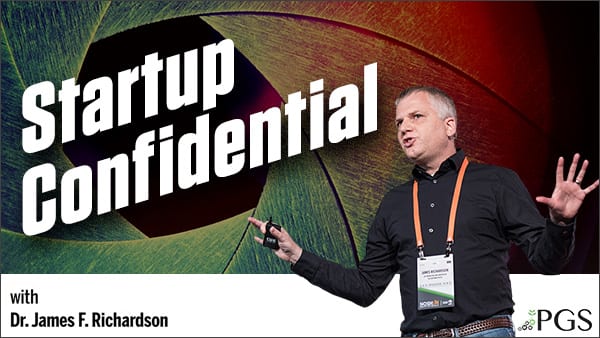PODCASTS / E55

Ep. 55 – Why I Said No to $255K in Work So Far And What You Should Learn From it
OCTOBER 1, 2021
WTF, James?! How many times do we have to tell you we don’t care about your damn B2B business. OK, OK, OK. Geez. Sorry for sharing. But I’m doing this, people. So, tough toodles.
And here’s why. I said no to this money to remain strategically focused, to kill off deadly distractions.
I mentioned this feat of ascetic restraint as social proof (I do what I preach) in a recent client conversation I had. One of my clients paused in complete bewilderment when I told her that I had turned away a quarter of a million dollars in billable work since starting my company.
This was work I had time to do. These were people who wanted to work with me.
At first, I was concerned her bewilderment meant she was rethinking her decision to hire a moron as her growth advisor, a so-called growth advisor who would throw away growth for their own business.
I explained my mounting ‘No shit-money’ pile like this: Look, as an entrepreneur you grow profitably by focusing. A lot. By saying no to business that is toxic, whatever that is for your business model and goals..
In consulting, toxic business means business from clients who are a) very unlikely to make use of what you say, b) who are excruciatingly agonizing to work with or c) who simply don’t respect your time or expertise. Or all three at once. Joy!
I had a banker in Seattle offer me $40K to do a category review relevant to a current CPG company in the portfolio. This was before my book, when, like those of you in the Death Funnel, cash was tight and dang did I like the sound of that number. But I was ready and here’s what I said to him,
“Look. As qualified as I am to do that, it would mean lots of time in excel, lots of powerpoint and probably 6-8 weeks of my time. During that time, I would have no time to do sales or marketing for the business I’m trying to build which is not stringing together long powerpoint projects. So, to bring in money with totally off-center business, my real business would have to get put on pause. Then, slowly, I’d wind up doing what the cash is telling me to do, not what I want to be doing for cash. I refuse to do that for any amount of money.”
In consumer goods, folks, toxic business early on amounts primarily to:: wasting inventory in a non-strategic manner.
And how long does it take to get past this wasted inventory? Could take 18 months, if it’s really slow-moving and the buyer’s floor velocity standard is already painfully low.
Wait, James, but I already got my money, so what do I care?
Because that inventory was unavailable to sell in channels where growth is strong. So, now you could find yourself with out-of-stocks there, losing sales to competitors and delaying your growth, your ability to cover fixed costs (the primary sign you’re out of the Death Funnel) while you inventory ‘stuck’ in a dead zone. I watched a client make this mistake last year, with inventory stuck in Saskatchewan, when she needed it in Toronto.
Anyone who has stared at a co-man’s minimum order case volume and cried, knows how awful it would be to find half of your inventory just sprayed into worthless points of distribution where neither brand awareness nor product relevance can be found.
Both retailers and even direct consumers can easily fool you with one purchase only to disappear and never re-order. (sound of winter gale). It happens a lot among independents, who are much less picky about onboading startup brands through their distributors (if they even make the decision at all). Many independents are led by their distributor in terms of merchandising.
Saying ‘no’ to retail customers that offer a poor strategic fit is really important when you are in the Death Funnel. When cash is tight, you simply can’t afford to spray even 10% of your inventory into dead zone retail outlets, because you do not have 6 months of inventory stored somewhere like bigger brands might do.
Again, I literally watched a client last year lose production due to a co-packer mistake but since he had sprayed inventory into Saskatchewan (where there are more caribou than humans) just to get cash…he went out of stock in high volume stores. Oops.
Ironically, you can mis-distribute and get away with it much better in Phase 3 and beyond. Happens routinely as folks aggressively add distribution (with a proven concept).
But in Phase 1 and 2 folks, this is cccccccc–razy! You have to be patient and hyper-disciplined as you build retail very strategically where the shopper base is most likely to discover you without any marketing at all. This is NOT a green light to spray your early inventory into a bunch of low traffic independent health food stores, folks. Those stores can be just as a velocity dead zone as Food Lion in rural North Carolina for your premium offering.
Grow where the market is giving you strong signals. Double down there before you expand. Say ‘no’ to other opportunities and distractions, including the temptation to launch into an adjacent category just to generate ‘launch’ revenues and dilute your sensitive brand-in-formation.